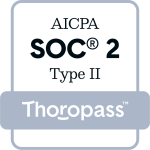Whether your business operates its own call center or leverages external organizations, every organization can benefit by reducing the overall costs associated with modern customer service operations.
Especially in the modern, post-COVID era of hiring challenges and increased customer service expectations, efficient, digital self-service should be at the forefront of all CX plans. At every phase of the customer service journey, innovative self-service stands to lower costs in modern customer service by Preventing, Deflecting, and Optimizing customer service interactions, while improving Customer Satisfaction.
“At every phase of the customer service journey, innovative self-service stands to lower costs in modern customer service by Preventing, Deflecting, and Optimizing customer service interactions, while improving Customer Satisfaction.”
1. Preventing Inbound Calls
The first phase for cost reduction in modern customer service is to leverage easy, convenient, enjoyable customer service experiences to reduce and minimize inbound customer service call volumes before customers place a call. Modern convenience means proactive communication with customers. Amazon notifies all of us as soon as our package is within 10 stops of being delivered. Every piece of software comes with a loading bar so we can see exactly how far along a process is. Modern consumers expect to be kept up to date with the latest information without having to go searching for it. Many organizations can reduce their inbound call volume by following this model and proactively messaging (via email, SMS, etc.) customers with the information they might have otherwise called in to discover.
By understanding callers’ needs, keeping them up to date and informed about the progress of their issue, and providing them easy access to resolutions, especially straightforward common resolutions, repeat calls become less and less frequent. Any customer service process involving statuses should be proactively sent to customers whenever possible to prevent repeat calls.
“Any customer service process involving statuses should be proactively sent to customers whenever possible to prevent repeat calls.”
Today’s self-service tools likeProactive Engagementcan be used to keep customers up to date on any issues that might need time to completely resolve. The status of a product return, for example, might mean customers calling in multiple times before return is complete. By proactively messaging customers and connecting them with self-service status solutions, customers can keep tabs on their return without needing to call in.
2. Deflecting Inbound Calls
Impacting the second phase of the customer service journey, deflection shifts inbound call volumes from Customer Service Representative (CSR) interactions to digital self-service alternatives. This tactic is especially powerful for common use cases that require less agent empathy and expertise. Some customers opt for online knowledge bases and tools like chatbots before trying other channels, but many customers are still calling contact centers as their first choice for solving customer service queries. That’s where self-service tools deployable directly within traditional IVR trees serve contact centers well. Self-service and modern automation are powerful tools but only if customers have the option of using them. With so many customers still calling in, contact centers must deploy self-service that meets customers on the channel they use most often — the phone line.
When callers connect with an IVR equipped withZappix Visual IVR,they are provided with an option to use self-service. When they choose it, the caller receives a text message with a link to the automated self-service Visual IVR experience. The customer then resolves the reason they called using their mobile phone, all in simple to use visual menus without the need to speak with a live agent. This self-service automation can resolve calls quickly and without requiring callers to wait on hold as automation can handle an almost unlimited number of customers at once, unlike live agents. This reduces average handle times and average wait times.
“Call deflection can have a double impact on cost reduction for today’s contact centers and customer service organizations.”
Not only do self-service deflection tools directly decrease inbound call volumes by handling calls without the need for agents, but they also reduce the cost of hiring and training new agents. In today’s Great Resignation economy, many CSRs will be quick to leave because of agent burnout and tiresome interactions. Common, straightforward calls — the ones perfectly suited for self-service automation — can quickly drain agents’ morale as they drudge through tedious interactions instead of more complex calls where their training and skills can be put to better use. Because of this, call deflection can have a double impact on cost reduction for today’s contact centers and customer service organizations.
Some quick math from our partnerCloud Tech Gurusdrives home the impact of reducing agent turnover:
The Total Cost of Turnover
3. Optimizing Inbound Calls
Not all inbound calls should be completely automated, however. Many calls and disposition codes necessitate human interactions. Sensitivity, adaptability, and empathy are at the heart of any good interaction with a customer service representative. These are traits modern automation simply can’t replicate.
Tools like Zappix on-demand applications should work with agents to deploy automation that assists them during customer service calls. When agents need to complete tasks like filling a form or pushing information to callers,Zappix Agent Assistworks faster than traditional methods. Instead of asking callers to recite long product codes or spell out their names one letter at a time, agents equipped with Zappix technology simply send callers a link to an On-Demand App with a smart form. Callers can enter information more accurately than agents and self-service avoids many security risks as well, further benefiting businesses. Zappix leverages every aspect of a smartphone, allowing callers to take pictures to better describe their situation, or watch FAQ videos to better understand solutions.
“Just because a call can’t be completely automated doesn’t mean agents should be left to handle things on their own.”
Contact center managers must understand and be aware of all three phases of the customer service journey if they want to make the biggest impact on their CX costs. Today’s automated self-service tools are more powerful and more useful than ever before. As contact center managers work to improve CX and adjust to our post-COVID world, smart leaders are leaning into the benefits of preventing, deflecting, and accelerating calls with customer service automation.






